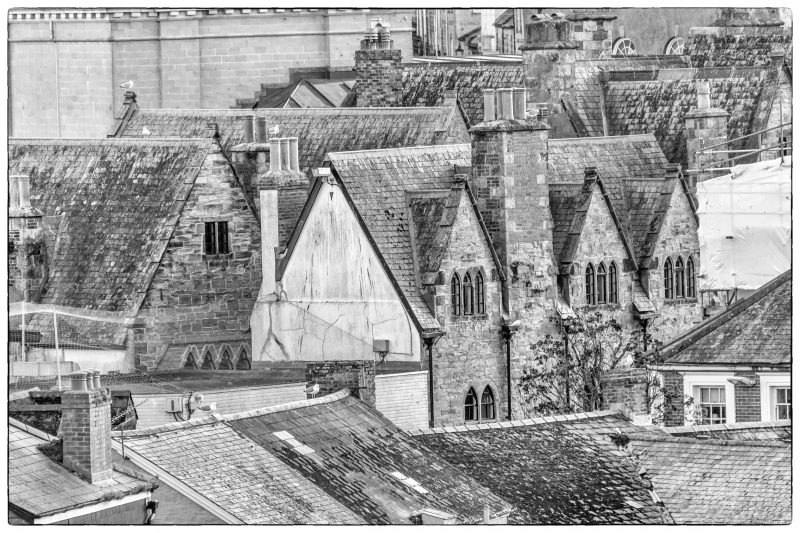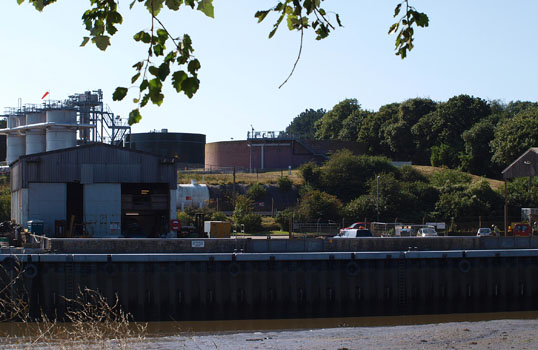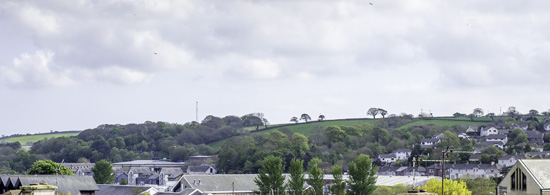Current Issues in Truro
Chairman’s Report
The winter has brought a difficult set of issues forward to preoccupy us as homeless people, many with mental health problems, addictions and habits, have made their presence very visibly known. There is a conflict of intent in how we address the matter – homeless people do not choose to be so, and if their homelessness has been caused by mental health issues or addiction, or by failures of employment or relationships, then it is most important to consider how support and help can be provided whilst at the same time ensuring that the trading environment in the town is welcoming and safe.
Frustration and effects of drink and drugs can lead to anti-social behaviours, and on occasion we have witnessed some very difficult, and sometimes quite violent happenings. I fear this has polarised attitudes and risked perceptions of the town centre being less positive than we would like, or think are good for trade, either by day or at night.
The Mayor, Rob Nolan, has been very active in drawing together all the appropriate agencies to focus on the issues. We have also seen media interest and public reaction. The latter is very mixed. Some people are very draconian, whilst others wish to see order combined with compassion. The situation over Christmas outside the NatWest Bank in St Nicholas Street was resolved once it had been clarified who owned the land. This clarification took some time but once it was obtained action was swift and decisive.
The problem has subsequently moved from doorway to doorway, with property owners moving in to board up doorways. The outcome is that the Front Street is looking quite distraught – Austin Reeds and BHYS are boarded up and Nat West has Heras fencing installed to protect the property. The rough sleepers, especially those who use alcohol, find it difficult to gain shelter, and so they are behaving almost nomadically. Facilities and resources to assist in addressing challenges and needs are thin on the ground. It is important to help the people who are forced to this situation, and it is urgent, partly because help is needed, and partly because the negative perceptions of the town centre are being reinforced by boarding and fencing, and partly because the problem seems to be growing.
Residents and visitors are becoming tentative about freely enjoying the life of the town, whilst the rough sleepers are becoming somewhat stigmatised and agitated. Earlier this week a big fight broke out in Boscawen Street which was uninhibited and frightening.
I raise this issue at the Civic Society partly because I think our objects oblige us to be considerate and to advocate for calm, thoughtful and useful solutions to difficult this situation, and partly to draw attention to the fact that the Front Street is beginning to look unkempt and on the verge of a degree of dereliction. For any town centre this is not good, but for the Truro Conservation Area it is doubly disappointing. I hope that in writing this I can enjoy the support of members in calling for a resolution of the homelessness problem which is both compassionate and useful for all concerned. I am awed by the professionalism, commitment and skill brought to bear by public and voluntary agencies.
Whilst there is much talk about housing supply, I strongly believe that we have placed ourselves at a critical disadvantage by plundering the stock of Council houses. We should, in my view, abandon the ‘Right to Buy’ and set about re-purchasing former properties, building new council houses and allocating houses so that they are inhabited by balanced communities that are best able to manage themselves and to secure peaceful, clean and safe environments.
The issues which I am hearing about which lead me to suggest that we need to be allowing balanced communities to evolve derive from allocations of dwellings in densely constructed council properties to younger people, some of whom are drug or alcohol dependent, or a risk to others in some way. This is generating fear and conflict. I suspect that a presence in the neighbourhood of some younger people who can set an example and stand up for quietness and good behaviour might settle things down far more effectively, reassuringly and practically than official intervention which, due to resource reductions, may not be consistent or deployable in good time.
There is also a growing case for insisting that the upper floors of town centre buildings are reoccupied. Putting a community back into residential occupation of the town centre is likely to have a salutary effect on security and behaviour whilst at the same time generating improved prospects for a revival of night-time economic activity.
BHS
The Littlewoods building is the biggest single retail space in the town centre. It has been a catalyst for two generations. It is good to see that Wilkinsons will be using both floors as a single trading entity. Sub-division, such as we have seen in Pydar Street at Marks and Spencers. The plethora of units and signage has broken up the unity of a prominent building. Whilst it fosters business and streetlife, the contribution to the Conservation Area is, I think, fairly negative.
Post Office
It has been announced that, despite a spirited campaign, the Post Office will leave the building which it obtained on a peppercorn leasehold until 2070 after the original Post Office was demolished to make way for Marks and Spencers and will move to W H Smiths. The Post Office has ignored issues about obscurity, access and security in favour of a quite baffling alliance with Smiths.
However, the question arises of what will happen to the current ground floor Post Office premises, which includes its back yard. In comparatively normal times one might expect to see some kind of sensitive new treatment, or a demolition, or, at least, a renewal. I don’t think that the building is one of merit – not every brutalist intervention was successful – and the location, in High Cross, neighbouring the Cathedral, tends to call for something more complementary than challenging.
St Mary’s Street
Many of you will know that the tarmac on St Mary’s Street covers (and protects) the wooden setts that formed the original surface. Wood was used to muffle the sound of vehicles so that sermons could be heard! The presence of very heavy vehicles, constant service vehicles, and wear and tear means that the surface is suffering – many ruptures exist – and that the integrity of the setts are at risk, especially to the rear of BHS. I have written to the Head of Transport calling for monitoring and remedial action. I hope that TCS supports that.
Rural setting
Part of Truro’s narrated character is its close relationship with its rural surroundings. Nowhere is this more obvious than at Idless Lane, off Moresk Road. An appliction to build a single dwelling in the triangular field to the rear of The White Cottage (just under the railway bridge) is controversial because it will break the voluntary embargo on expanding Truro towards Idless, erode the amenity of the walk to Idless Woods, increase the risk of flood and overlook the White Cottage in a most unneighbourly way. There is a high level of objection to this application. However, I think it most important to stress the risk of further collapse of the Cornish hedge which retains the slope along the length of this terraced road. We saw a collapse at the Nancemere Allotments site, a few yards along the Lane last year. It blocked the road and was costly to repair. Reinforcement or repair, if required as the result of theimpact of new development behind the hedge, is likely to result in modifications or changes in style of the Cornish hedge. This would be to the detriment of the rural setting.
The siting of a single dwelling in the manner proposed raises questions about what the rest of the field would be used for. The Design Statement suggests ‘agriculture’! Sprats and mackerel come to mind.
I will report verbally on the local list and the coffee morning.
Bert Biscoe
1st February 2017








Recent Comments